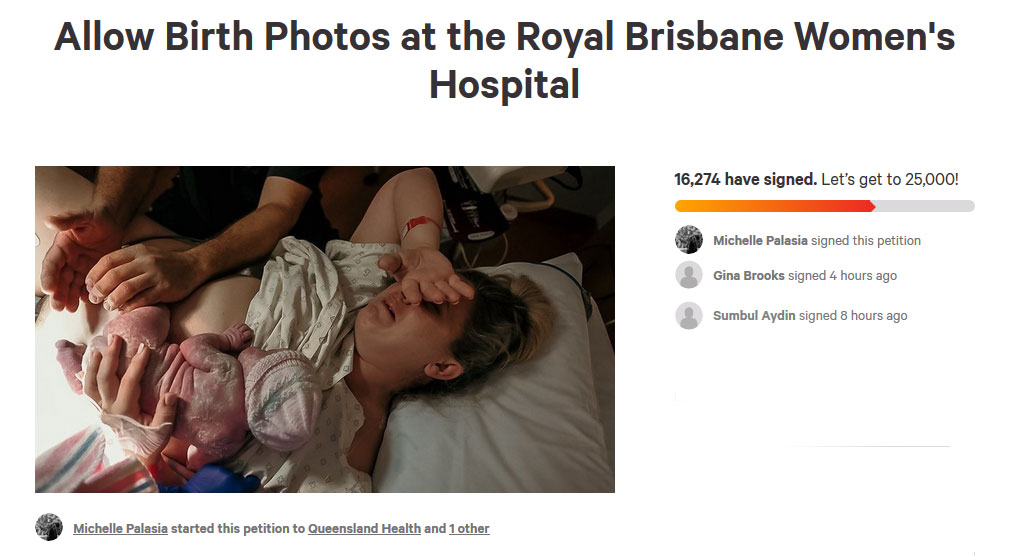Queensland birth photographers are advocating for the Royal Brisbane Women’s Hospital (RBWH) to lift its newly-enacted professional photography ban.

So far an online petition has garnered over 16,000 signatures, with the aim to strike 25,000.
Brisbane birth photographer, Michelle Palasia, launched the petition and publicity campaign in mid-December. She told Inside Imaging now that the holiday period has passed, she will kick back into action.
Michelle says the professional photography ban has been in effect in September, but the hospital had only e-mailed midwives, and the restriction hadn’t been made official.
Award-winning birth photographer, Selena Rollason, has contacted the AIPP to take on the matter, but requests for a meeting with the midwifery unit was rejected. Further contact was made with hospital executives and legal representatives, but it seems the RBWH is not open to any negotiations.
Professional photographer are still allowed inside the hospital birth centre and birth suite before and after the procedure.
The ban relates to photographing the actual birth, which includes crowning, the moment the baby arrives and the emotion that follows, cord cutting, and the parents first holding the child. These are the crucial moments many clients wish to have documented.
‘As a birth photographer, I know that a documented birth story can act as a crucial therapeutic tool for post-partum families. It pieces together moments that are forgotten. Moments that are hazy. Moments that don’t make sense. To strip families of this powerful tool and leave them with an incomplete story is reprehensible,’ Michelle wrote on the petition.
‘A birth story cannot be documented without the images of your baby entering the world, and the emotions experienced by yourself and your birth team. Seeing these images and reliving the moment you met your baby, floods the body with oxytocin which not only enhances your relationship with your baby by triggering nurturing feelings and behaviours, but also assists in the release of milk in breastfeeding. Oxytocin is crucial during post-partum because it’s the “feel good/love” hormone and if we’re able to induce the natural production of this hormone, then we should be encouraging this by any means.’
RBWH executive director, Dr Amanda Dines, told News.com.au that the ban has been longstanding due to safety concerns.
‘Complications are rare, but can arise very quickly during a birth, so it’s crucial our team can perform their duties with the utmost care and attention, with no other distraction, so they can continue to provide focused care,’ she said.
‘While we make every effort to make our birthing suites as warm and homely as possible, they are clinical procedural areas. They are still highly technical areas with a range of emergency equipment on hand, so having additional people with additional equipment can potentially get in the way of the work our clinicians need to do.’
However Michelle maintains that professional birth photographers know how to work safely in a medical environment, whereas family members wielding a camera are more prone to getting in the way or making mistakes.
Despite the ban supposedly existing for some time, photographers only begun reporting it being enforced from September 2018.
Michelle says a photographer she knows was recently asked by a midwife to turn her camera off during a birth.
Some expectant parents who booked a photographer have responded by transferring to other hospitals, such as Mater Mothers.
Michelle’s next course of action is to contact government departments, and local and state MPs.





Be First to Comment